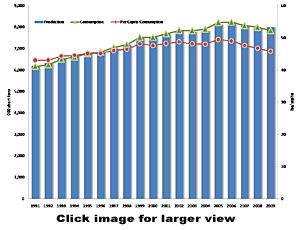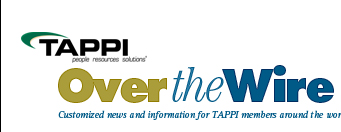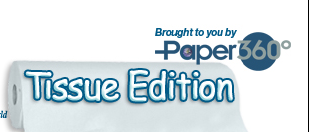Changing Consumer Behavior in North America: The Bull in a Bearish Industry
 Print this article | Send to Colleague Print this article | Send to Colleague
Beginning this issue, Pöyry Management Consulting will provide on-going reports to the From the Experts section of Over the Wire—Tissue edition. Drawing on expertise from its global offices, Pöyry will update readers on the opportunities and challenges facing tissue producers today. This first report addresses changing consumer behavior in North American tissue markets. Future reports will explore topics such as capacity build-up in North America, emerging tissue markets, tissue market segments, and much more.
 The tissue paper industry in North America has historically outperformed other paper grades, achieving an average long-term growth rate of about 2%/year between 1990 and 2009, but with a maturing rate of 1.6% for 2001 - 2009. Tissue paper consumption has been impacted by economic cycles, with stagnant growth in 2002 - 2003 and most recently in 2007-2009 (see the statistical snapshot graph for the North American tissue industry below). The long-term outlook for tissue demand is steady, supported by underlying growth in fundamental drivers such as population, household formation, and GDP. Pöyry expects North American tissue demand to rebound, growing between 0.7% and 1.8% over the next five years. The tissue paper industry in North America has historically outperformed other paper grades, achieving an average long-term growth rate of about 2%/year between 1990 and 2009, but with a maturing rate of 1.6% for 2001 - 2009. Tissue paper consumption has been impacted by economic cycles, with stagnant growth in 2002 - 2003 and most recently in 2007-2009 (see the statistical snapshot graph for the North American tissue industry below). The long-term outlook for tissue demand is steady, supported by underlying growth in fundamental drivers such as population, household formation, and GDP. Pöyry expects North American tissue demand to rebound, growing between 0.7% and 1.8% over the next five years.
Despite long-term tissue demand stability, recent cyclical contractions in tissue consumption are steeper than what has been observed in the past. Triggered by one of the worst recessions in history, shifts in consumer behavior could be changing the playing field in the North American tissue industry. Sustained high unemployment rates and uncertainty in labor markets continue to cause consumers, governments, and corporations to search for cheaper alternatives for every-day products.
Away-From-Home Segment: Creative Cost-Cutting. The Away-From-Home segment, being more sensitive to economic cycles, is slow to rebound and has been the worst hit tissue market segment, as key end-users have found creative solutions to relieve financial pressures. Most recently, the city of Newark, N.J., USA, announced it would eliminate the purchase of toilet paper for city offices to help close a $70 million budget deficit. Similarly, Texas A&M University is considering discontinuing the purchase of toilet paper for its residence halls. Texas A&M University has estimated these actions would save up to $82,000/year.
Although such actions may not be widespread in the market, these trends are shifting consumption towards individuals, who will exert an even greater influence over product characteristics and preferences.
Price-Sensitive Individuals: Battle of the Brands. Dominant branded tissue products are facing increased competition from private label products. In 2009, private label saw one of its biggest share gains in toilet tissue. Large retailers including Walmart have made coupons and free samples available to increase the sales of branded tissue paper products, but Pöyry expects that private labels will continue to capture market share, as not all consumers will switch back to branded products as the economy recovers. This is especially true because private labels are improving product quality.
Big Players, Big Impact. Sustainability has been a key theme in the tissue products industry for several years and is gaining momentum, especially from the large end-users. Having been criticized for their impact on the environment, large retailers, hotels, and restaurants are increasingly promoting the use of recycled products and have implemented new strategies for reducing paper usage in their establishments. "Going green" is becoming a competitive driver.
Last year, McDonald’s executed a "One Meal, One Napkin" initiative in its restaurants located in Walmart stores to help reduce the consumption of napkins and promote environmental awareness. Customers were limited to only one napkin per meal at cashier’s stations and signs were posted throughout the restaurants to encourage limited use at the napkin dispensers. McDonald’s estimates that the initiative saved approximately 170 million napkins across the U.S.
Although virgin pulp continues to dominate for quality reasons, consumers are increasingly demanding recycled content in tissue products. In response to these trends, retail giant Walmart recently teamed up with Seventh Generation to make their recycled tissue paper products readily available in 1,550 stores nationwide. Seventh Generation is a leading environmental products brand offering several 100% recycled tissue products.
Controlled-use towel dispensers continue to grow in use and are cost-effective and environmentally-friendly products, reducing the amount of paper product consumed.
New Needs, New Products. With these downward pressures on consumption and shifts in consumer behavior, tissue producers are searching for new, higher growth product avenues to meet changing consumer needs. Tissue giant, Kimberly-Clark, recently launched Kleenex Hand Towels, a new single-use hand towel designed to address the consumer’s growing concern over hand hygiene. Kimberly Clark believes the product taps into unmet customer needs, offering a cleaner alternative to a shared bathroom cloth hand towel.
Other new growth avenues include wipes, feminine hygiene products, and scented and soothing tissue products. New product innovations and developments will continue to be a key factor in driving growth for tissue producers.
Putting it All Together. Revived thriftiness brought upon by the financial crisis has caused individuals and large entities to search for cheaper alternatives for every-day products, impacting consumption patterns in the North American tissue industry. Private labels have become more popular with frugal consumers and are further penetrating tissue products markets. For some larger entities, cost-cutting initiatives have been so drastic that tissue products have been removed from their budget entirely.
Though many of these recessionary consequences may not be permanent, Pöyry expects that, for many consumers, reverting back to old consumption habits will be a slow process.
   
|

